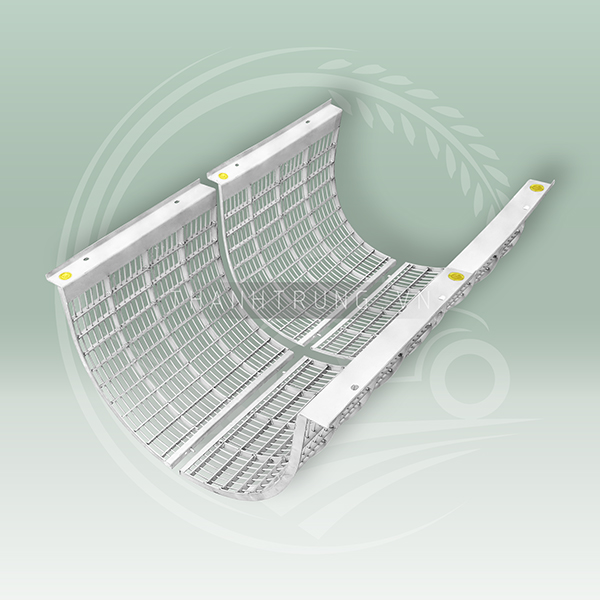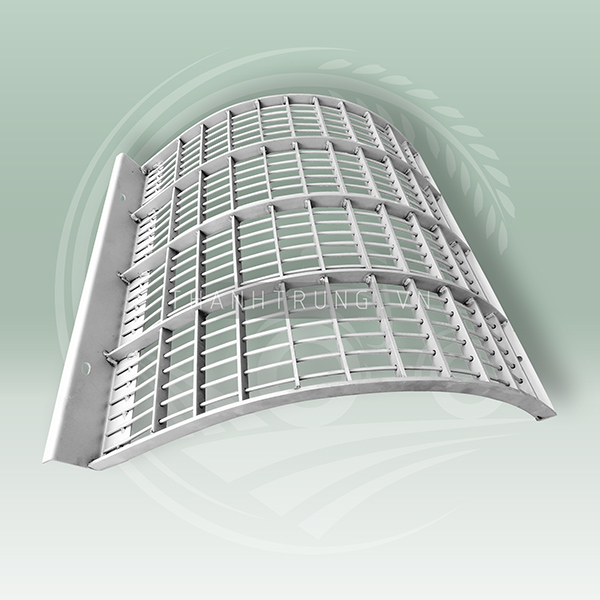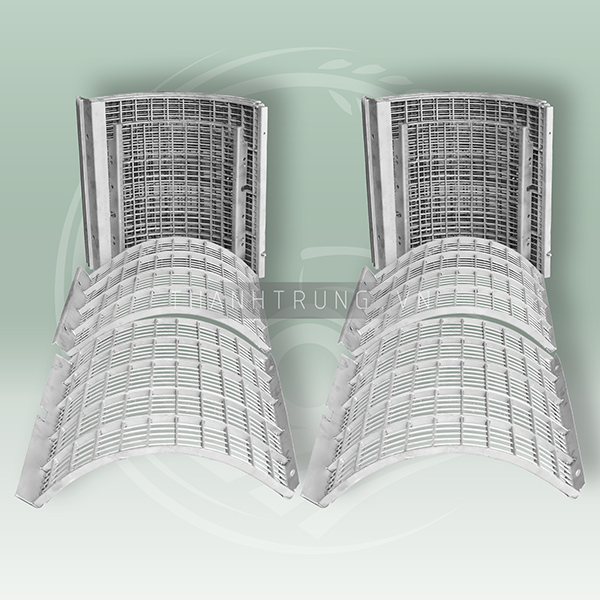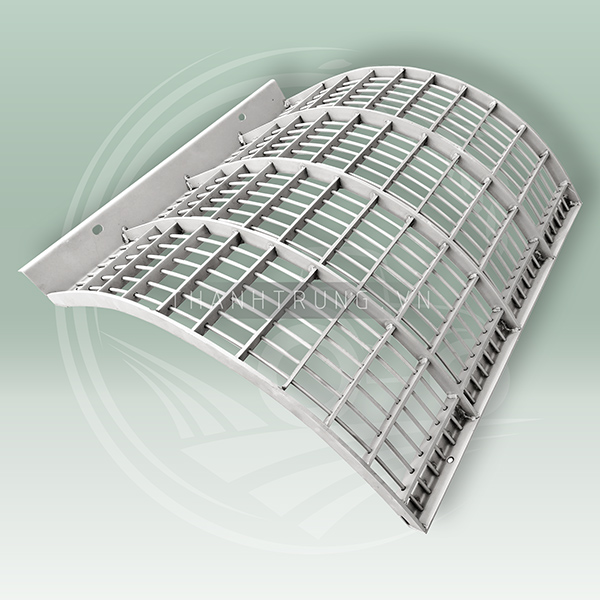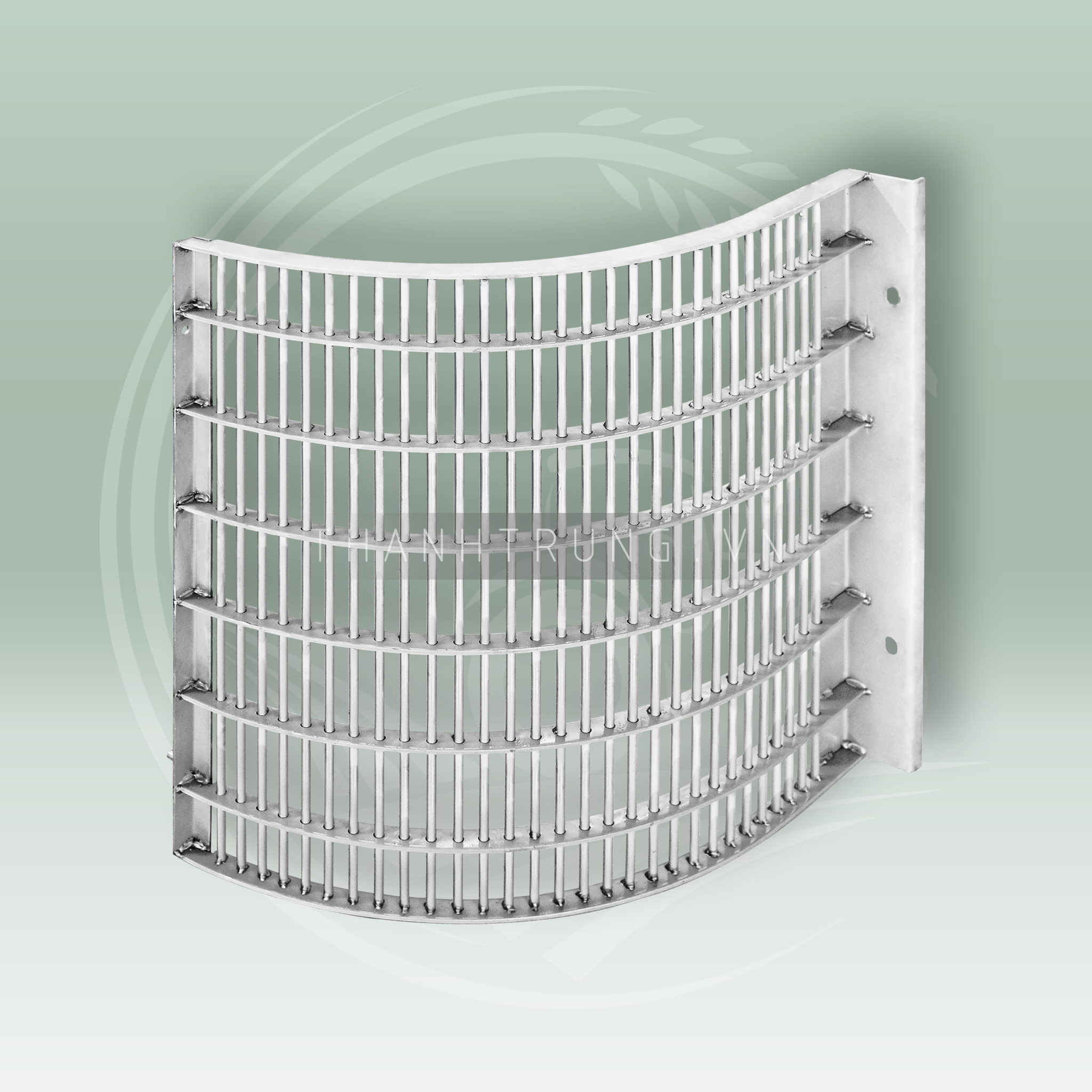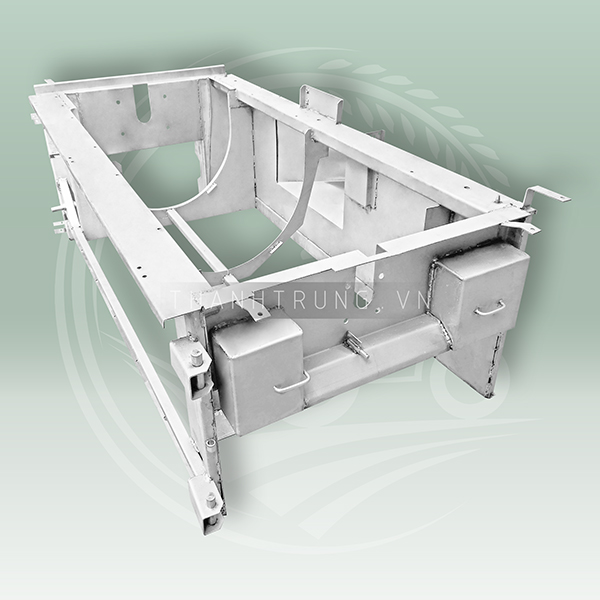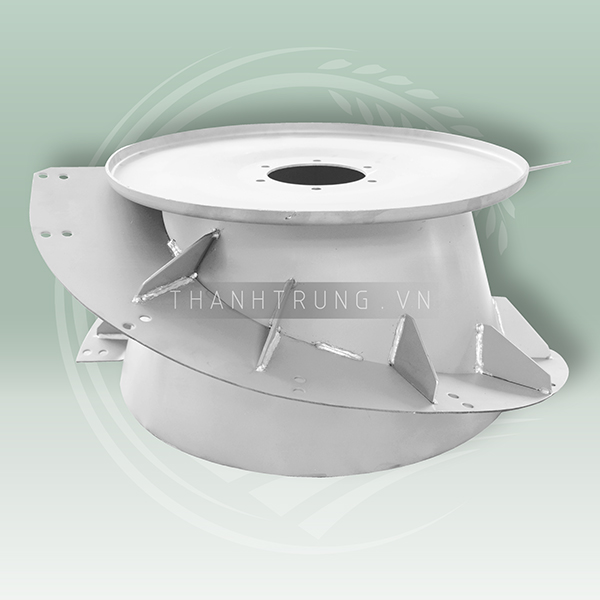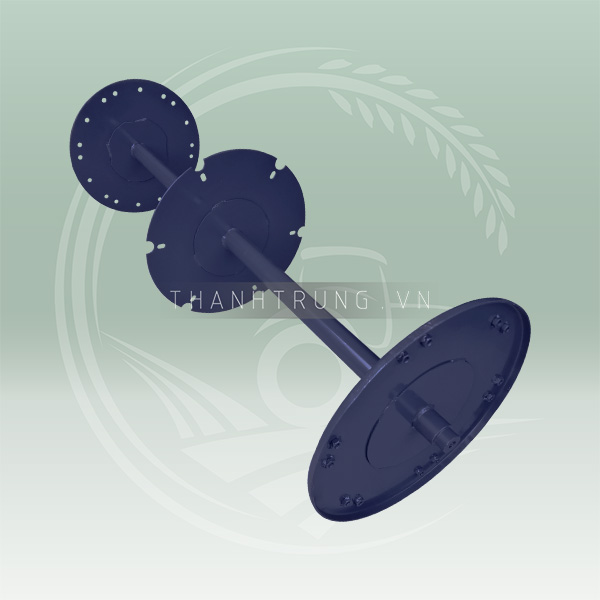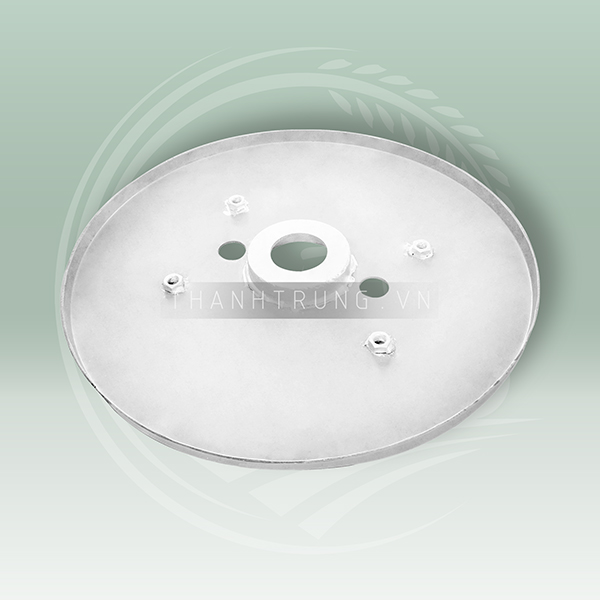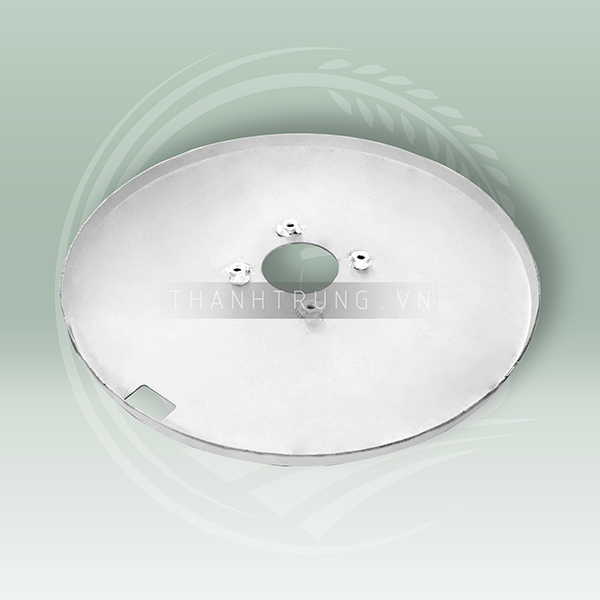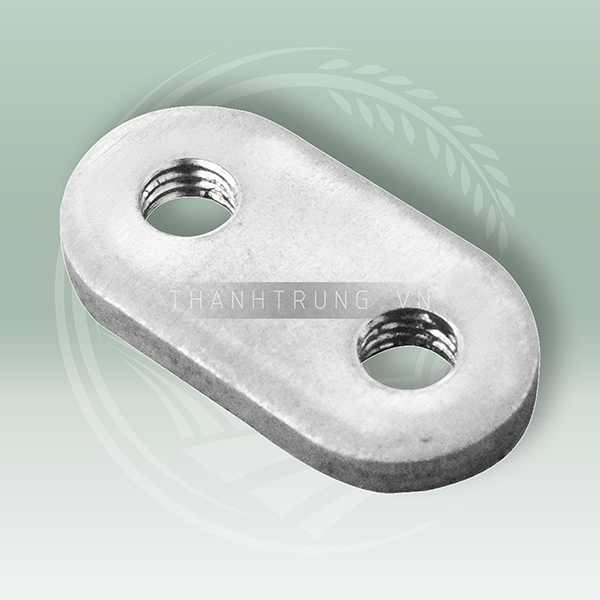Combine Concave
Suitable for DC60 / DC68G / DC70 / DC95 / DC105 / AW70/72
Details
SHARE
Informations
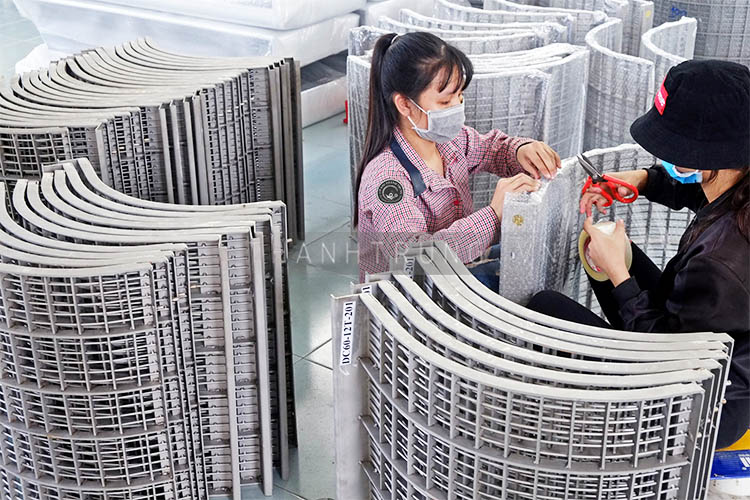
Concave on Combine Harvester – Everything about it
Combine concave is an indispensable part of a combine harvester, with two vital roles in the harvesting process: freeing seeds from plants (threshing), and moving them away from the chaff (winnowing). The quality of your harvested crop depends significantly on the combine concave you are using.
What is Concave in Combine Harvester?
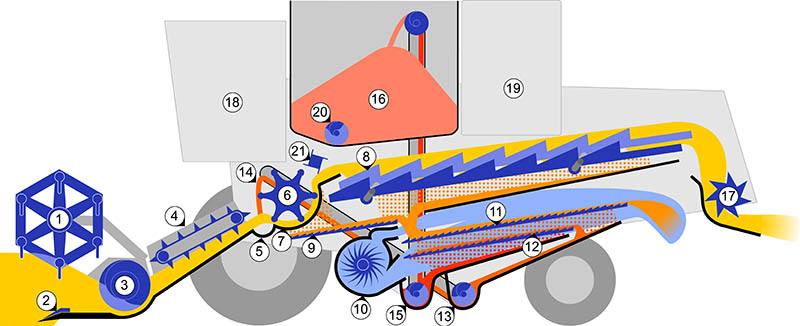
Source: https://en.wikipedia.org/wiki/Combine_harvester
A common combine machine consists of 21 following parts:
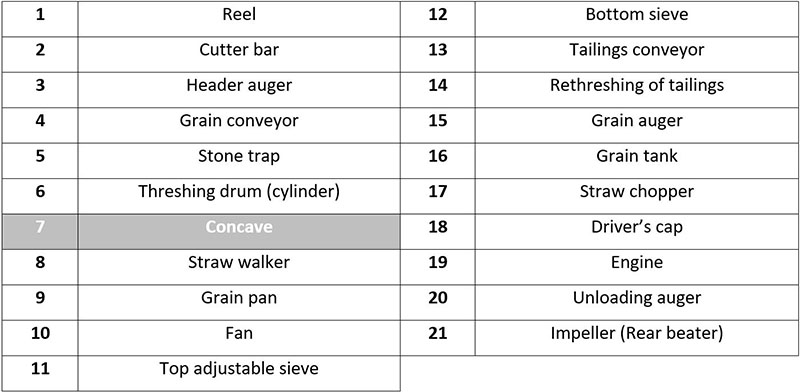
A combine harvester, or just combine for short, is an efficient harvesting tool for modern farmers. The name “combine” refers to the combination of three (03) different harvesting functions: reaping, threshing and winnowing, into one single operation.
What is reaping means in farming (crop harvesting)?
Reaping means the farming operation of cutting (and also gathering) ripe crops at harvest.
What does threshing means in farming (crop harvesting)?
Threshing refers to the task of separating grain from its attached crop. This grain preparation task comes after the reaping process. However, the bran remains attached to the grain through the threshing action.
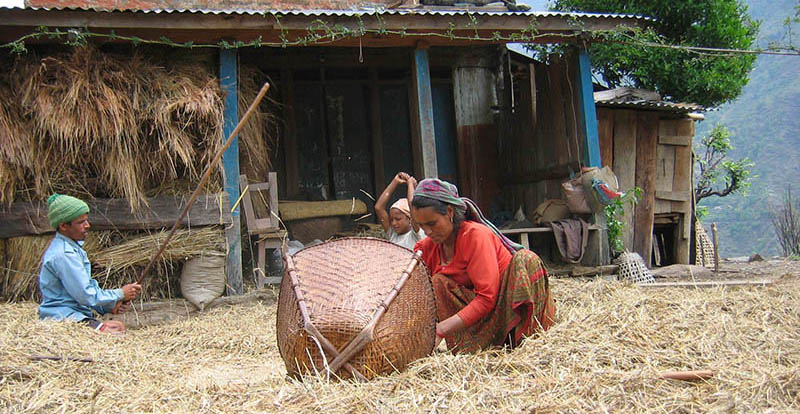
Source: https://www.freeimages.com/photo/threshing-grain-1536949
What does winnowing (separation) means in farming (crop harvesting)?
Winnowing takes place right after threshing part. It is the process of freeing the grain from the chaff. Normally, winnowing is called “wind winnowing” because of its manual execution in the past.
During the manual process, the mixture of grain and chaff is dropped on the ground from a specific height. The chaff - the lighter part - is carried away by the wind and land at a further distance, while the grain – the heavier seed – falls almost straight down.
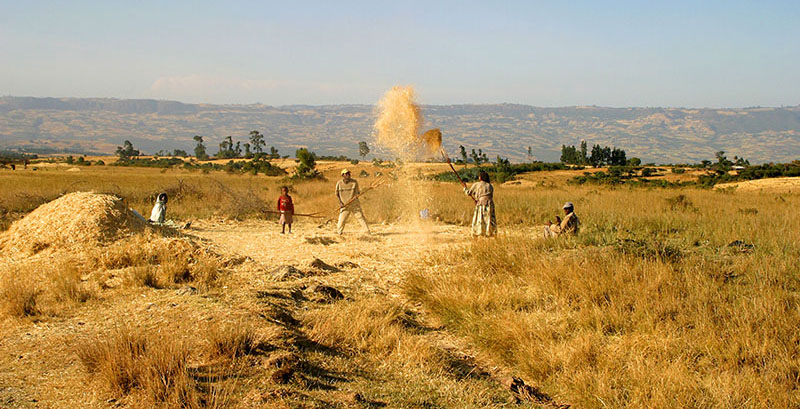
Source: https://www.freeimages.com/photo/winnowing-1549230
Combine concaves are used to filter grain and small straw in the treatment of grains such as rice, corn, etc. Among the components of a combine harvester, concave is located near the front of the machine, underneath a threshing cylinder. Together with the cylinder, they form a section named “threshing unit”, performing specifically the threshing function.
After being squashed against by the threshing drum, grains are filtered through the concave. This is the second function of combine concave, as it separates grain from its chaff (winnowing process).
Otherwise speaking, combine concave is one of the most significant combine harvester part, as it assists greatly in the performance of two out of three main roles of the machine. Thanks to this kit, the productivity and work efficiency of farmers in grain treatment is impressively improved.
Combine Concave and the crop harvesting process
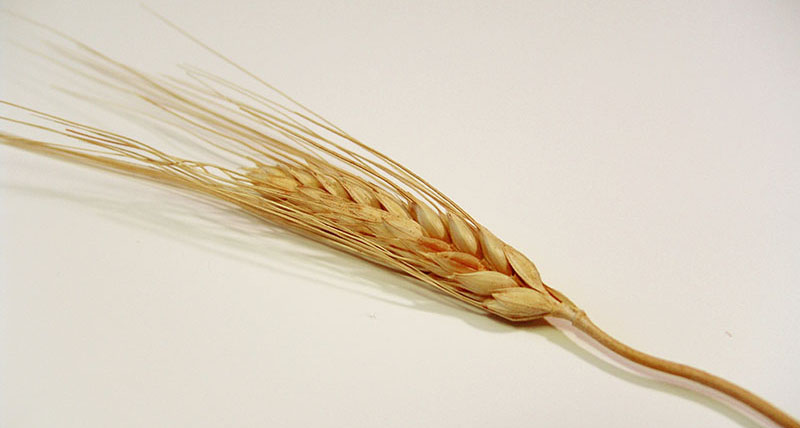
Source: https://www.freeimages.com/photo/wheat-2-1503769
All the crops planted on our farms, like rice, wheat and barley consist of three (03) main parts: Grain – the seeds located at the top; Chaff – the seeds’ dry coatings; and Stalk – the overall stem of the plant. However, not all three parts are edible. Only the grain can be collected for use in bread and cereal production, which is edible. The other two – chaff and stalk – have to be removed.
In the process of crop harvesting, the final goal is to separate and get the grain out of its stalk and chaff. These are called threshing and winnowing (separation).
Through the utilization of combine concave (together with the rotating cylinder and other components in the combine harvester), threshing and winnowing can be automatically carried out. After the process, usable grains (separated from chaff and stalk) are loaded in the grain tank.
How Combine Concave reforms the entire agricultural sector?
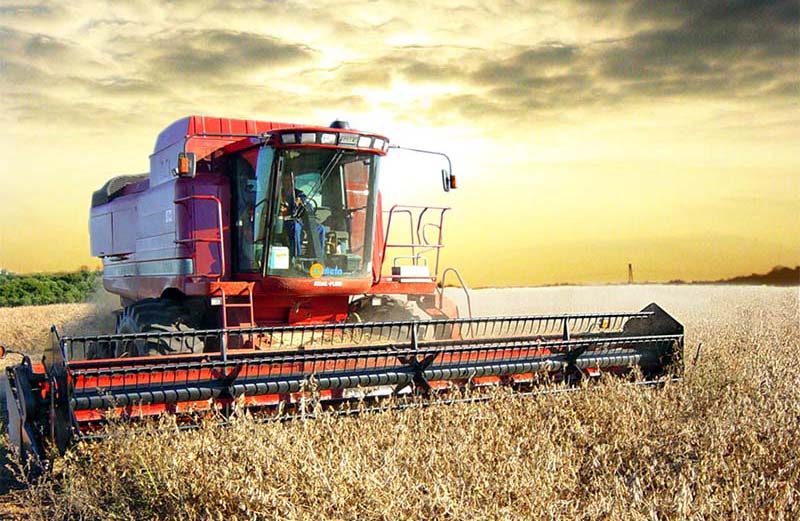
Source: https://www.explainthatstuff.com/howcombineharvesterswork.html
To demonstrate the huge contribution of Combine Concave (or Combine Harvester in general) in shaping our modern agriculture nowadays, it is a must to consider our history in such field.
In the 19th century, in the United States, over 85 percent of the entire population at the time was utilized to work the land. This is because at during such time period, farming tasks are mainly done manually, which is very time- and labor-consuming. Before the emergence of combine harvester and other modern farming equipment, farmers had to do everything manually.
The process of crop harvesting comprises a long series of laborious tasks. Such tasks include the use of a scythe – a long equipment with sharp blade – to cut down the crop, the beating of stalks (threshing), the wind winnowing (described above), and the cleanup of residual debris on the ground (which can be used later as cattle food). All these laborious works took required a huge amount of time and farmers.
Two hundred years later, everything has changed. Nowadays, only around 2 percent of U.S citizens work on the field. The development of advanced, multi-functional and automated farming machines has vastly improved farmers’ productivity. Nowadays, all that the farmers need to do is simply driving combine harvesters around the field, as every laborious tasks of yesterday are automatically handled by equipment such as combine harvesters and the combine concaves inside.
Such modern machines reap, thresh, separate and clean the grains all by themselves. The harvested grains are stored inside a grain tank, while the stalk and chaff are chopped and exited through a big pipe at the back and land onto the field, waiting to be collected and used for cattle food at a later time.
Clearly, our agriculture nowadays would not be as developed without such advanced machines, such as concaves and other parts in the combine harvesters. They provide the ease and productivity enhancement in an amazing way. These so called “mech-tech” tools are great assistants to agricultural workers in collecting any crop (ranging from wheat, maize, to barley and rice, etc) at any quantity on the farms.
Components of Concave in Combine Harvester?
When mentioning about concave, there are two basic options that both farmers and manufacturers need to pay attention to. They are: (1) the clearance system, (2) the design patterns.
The clearance system of Combine Concave
The clearance refers to the distance between the threshing cylinder and the combine concave. This parameter is very important in the threshing process, and is adjustable to best fit the crop type being harvested.
The ultimate role of the clearance parameter is to control the material flow, and depends greatly on the grain type (or size, to be exact). Under normal circumstances, there are two (02) scenarios relating to this clearance setting:
If too much space between the cylinder and the concave exists (too large clearance), the threshing function will not be efficiently carried out, with many grains remain unseparated.
If too little space between the cylinder and the concave exists (too tight clearance), the threshing function might be a failure, as most of the material will be damaged.
Details about the clearance settings will be discussed later in this article.
The design patterns of Combine Concave
The concave’s design patterns refers to its bar and wire style. Combine concaves have many bar and wire designs. Such feature is also an important aspect to look into when selecting a combine concave, as different designs serve efficiently for a different set of crop type. Depends on the shape of bars and wires, the designs can be one of the following types:
Round-bar concaves
This type of combine concave comes with round bars only, and no wires. Round-bar concaves are ideal choice for large-volume contexts circumstances. Certain models go with helical round bars, while others advocate diagonal pattern thanks to its higher threshing efficiency (lesser volume of unthreshed materials).
Straight-bar concaves with curved wires
With this design, the rotating axis of the threshing cylinder is parallel to the straight bars, and perpendicular to the curved wires of the combine concaves. The bars are square-edged.
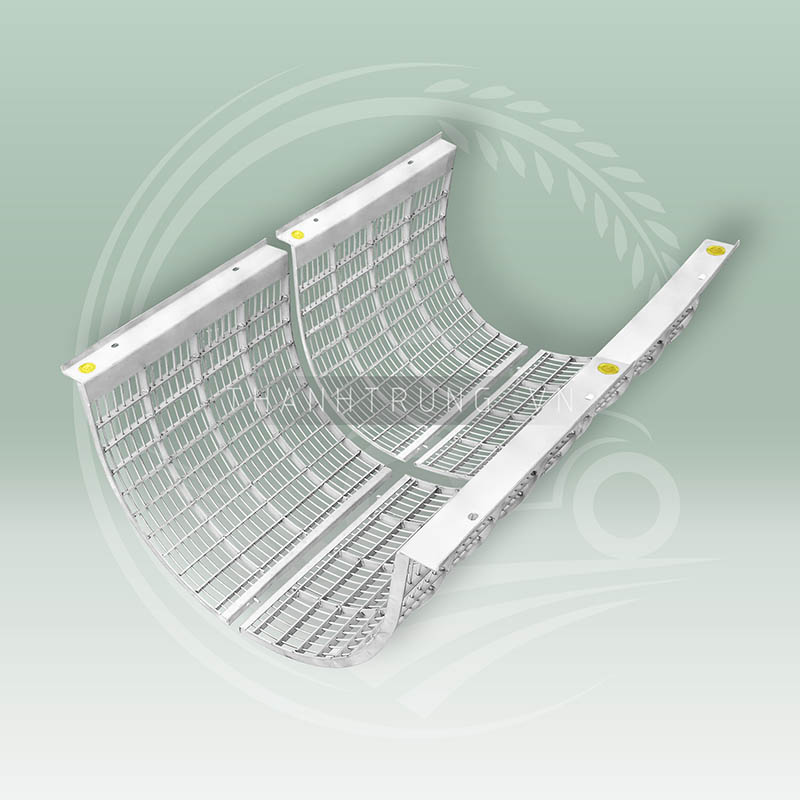
Source: https://thanhtrung.vn/en/threshing-frame-upper/concaves-kubota-aw70-82.html
There come two (02) versions of the wire spacing:
Narrow-wired option
This option is suitable for small-sized grains such as barley and wheat. Such small materials can easily sift through the narrow spacing between the wires.
Wide-wired option
Wider option for concave’s wires allows for the accommodation of larger grains, like beans and corn.
Cover plates of Combine Concave
In some concave models, farmers install cover plates to enhance the threshing efficiency. The plates are strategically placed to enclose the combine concave, making sure the grains remain longer in the clearance – the space between the threshing cylinder and combine concave.
Work mechanism of Concave in Combine Harvester?
The threshing process works based on the friction force among the harvested plant, the threshing cylinder, and the combine concave. One important adjustable option relating to the combine concave is the clearance between it and the rotating cylinder. After going into the clearance, the crop is pressed against the combine concave.
The result is the grain separated from its attached plants. Apart from the cylinder rotating speed and crop types, parameters such as clearance distance and pattern design play a vital role in how clean the output will be in the grain tank. Therefore, such setting should be properly adjusted in order to achieve the optimal output while harvesting the crops.
If the clearance becomes too wide, the separation task shall not be carried out efficiently, whereas if such space is smaller than the grains’ size, the materials could be badly beaten up and become permanently damaged. Thus, the appropriate combine concave and the suitable concave adjustments should be carefully considered and followed, under the proper examination of manual guidelines, to ensure an efficient and smooth operation.
Average Combine Concave's settings for threshing process
During threshing process, farmers and producers can investigate the below table for average settings of certain aspects. This table is for reference only. The exact setting should be consulted carefully by your combine concave manufacturers.
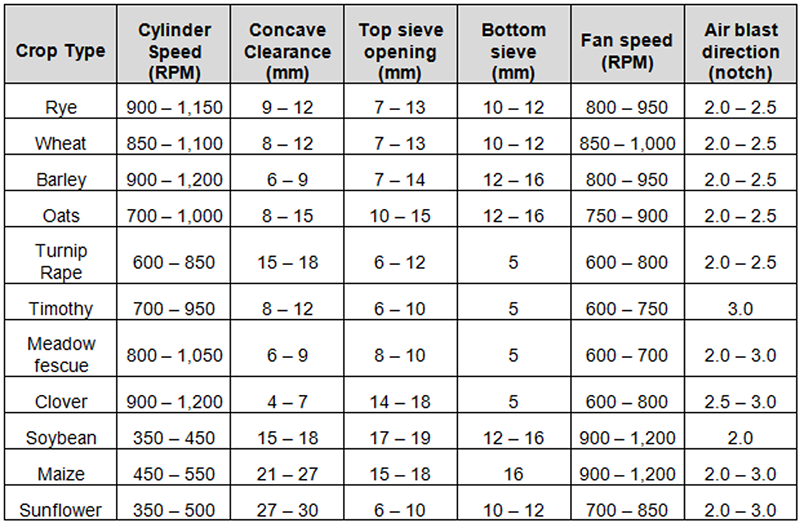
Choosing the right setting for your Combine Concaves
An optimal concave setting for the combine harvester can result in greater operation of the equipment. With the performance of two out of three harvesting functions, which are threshing and winnowing, opting for a well-designed concave (in terms of clearance system and pattern design) shall assist agricultural workers in a various ways, including some of the following contents:
Limit rotor loss
One of the toughest issues that farmers face is the rotor loss. Rotor loss, also called “volunteer yield”, refers to crops that fall out of the back of the rotor combines. The cause of such issue comes from the overload of the separation process, when combine concave captures too little threshed grain.
Therefore, the crop material being fed in the concave cannot be detached in time, resulting in them “voluntarily” being kicked out at the back of the combine harvester. The problem only occurs in the new and advanced combine machines, because of its significantly high speed and capacity.
Normally, the rotor loss ranges from 2 to 5 bushels per acre (2-5 bsh/ac), which is equivalent to 134.5 to 336.3 kilograms per hectare (134.5 – 336.3 kg/ha). Take 1,000 acres of soybeans as an example, this rotor loss can value up to $32,000.
However, this issue can be tackled by the optimal selection of concave system. With a suitable choice of combine concave, farmers can have more threshed grain volume passing through the equipment and reduce pressure for the separator. In the end, overloaded rotor is prevented and more grains are stocked in grain tank.
Allow individual setting for each crop type
Combine harvesters can handle a wide range of crop type, including wheat, soybeans, corn, rice, lentils, sorghum, flax, pinto beans, canola, etc. This is attributed to the versatile setting of concave system. Before starting the harvesting process, consider carefully your collected crop type, and adjust the concave accordingly in terms of clearance distance and pattern design.
Quick Guide to Choose Best Combine Concave Manufacturers
Configuration and Durability
Manufacturers of combine concave should understand that cultivating conditions vary greatly from time to time. Therefore, manufactures must ensure the combine concave to be extremely configurable and durable.
Every alternative option must be suitable for any individual crop type, and such equipment must be produced from solidified and stainless steel (to prevent wear and tear from friction during operation).
Highly advanced features
The competency of combine concave manufacturers to build highly advanced concave framework is also important. A modern framework of combine concave can help limit rotor loss and enhance the overall quality of harvested grains.
The advanced framework mentioned here refers to the simple and fast adjustment which the concave manufacturers can bring about to farmers during operation.
Smart Sensor Technology
Top combine concave manufacturers should utilize the technology of smart sensor to fully enhance the quantity and quality of the output. The use of smart sensor is very necessary, taking into consideration of the ever-changing conditions of the material. For instance, if the grains are wet, or when the harvested materials contain more soil, when they get dry, the residue volume could be very high.
In the opposite direction where the atmospheric temperatures are at high stakes, grains could be damaged or in even worse situations. The existence of such smart sensors can significantly help in the detection and forecasting of such problems.
Value for investing money
High quality combine concave may cost a large sum of money. However, incorporating such equipment into the combine harvester can result in higher yielding with consistent quality and limited loss. In this way, investing in quality concaves from trusted manufacturers is a profitable business deal. It is essential for farmers and producers to opt for the best concave builders with an aim to get the most return from the initial investment.
Five issues that combine concave manufacturers must solve
The initial investment that farmers have to put forward, in terms of time, effort and resources, to grow crops is very significant. Therefore, getting the most return out of such investment is important to them. With an efficient use of combine concaves during crop collecting, farmers can achieve better yield and quality, which is eventually translated into bigger profit. The high level of configurations and adjustments allows the combine concaves to perform at their best conditions. However, combine concave manufacturers should carefully look into and solve the following five basic issues:
Cutting and feeding of harvested crop via the combine header
This is one important role of the combine concave. The crops are cut and delivered into the machine through the header. However, manufacturers of combine concaves should pay attention to the material flow from the header into the feeder house, to prevent collected crop from sustaining backward in the early stage of grain sifting.
Uneven material flow leads to high quantity of unthreshed grains
Threshing process takes place in the inner of combine concave, where the grains are taken apart from its stalk. However, there is a common issue relating to threshing: not all materials are threshed, due to the uneven flow from the header. To avoid such problem, farmers should consult combine concave manufacturers and follow their advice to ensure a smooth feed-in operation.
Cleaning issue in grain tank
The cleaning issue is best illustrated when the seed is separated from its finer chaff. This can be fulfilled by changing the fan speed or altering the chaffer settings, so that grains shall fall into the spotless grain tank.
Grain Management
The combine’s elevator conveyor determines the quality of grains to be delivered into the grain tank. Ensuring the correct tightness of the conveyor can protect the grains from being squashed and damaged between the lift chain and the cog wheel.
Residue Management
This function is the most important function of a combine concave. An adjustable auger can assist in getting the most preferred residue’s size before discharging such residue behind the machine. Failing to do such configuration shall result in wasteful use of motor energy.
If all above-mentioned functions are tackled successfully by concave manufacturers, their combine concave can operate at an optimal level of energy consumption, highest throughputs and lowest grain loss. Just make sure to accurately follow your manufacturers’ instructions.
Summary
With over 10 years of experience in metal fabrication, Co Khi Thanh Trung deeply understands the effects that combine concaves have with the quality and yield of harvested crops. Compiled of a team full with professional, enthusiastic and skillful engineers, we are proud to be your trusted partner, a reliable companion with Vietnamese farmers. We know what it takes to create concaves with superior quality. Get in touch with us today to experience the most modern and convenient agricultural products, including combine concaves.
Link out and prosper!
- https://www.wsj.com
- https://www.abilenemachine.com
- Combine Harvester Instruction Book of Sampo Rosenlew Ltd, Finland (Nov 2012)
- https://www.explainthatstuff.com/howcombineharvesterswork.html
